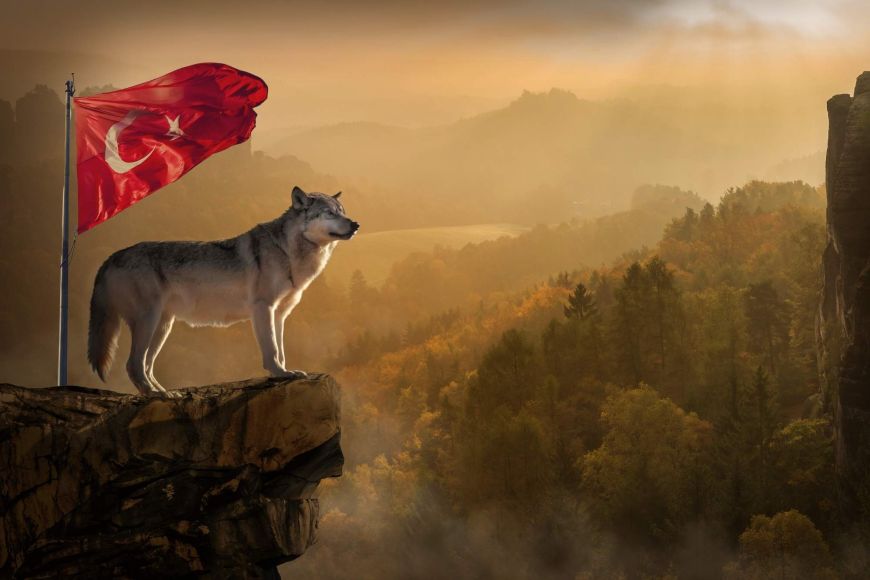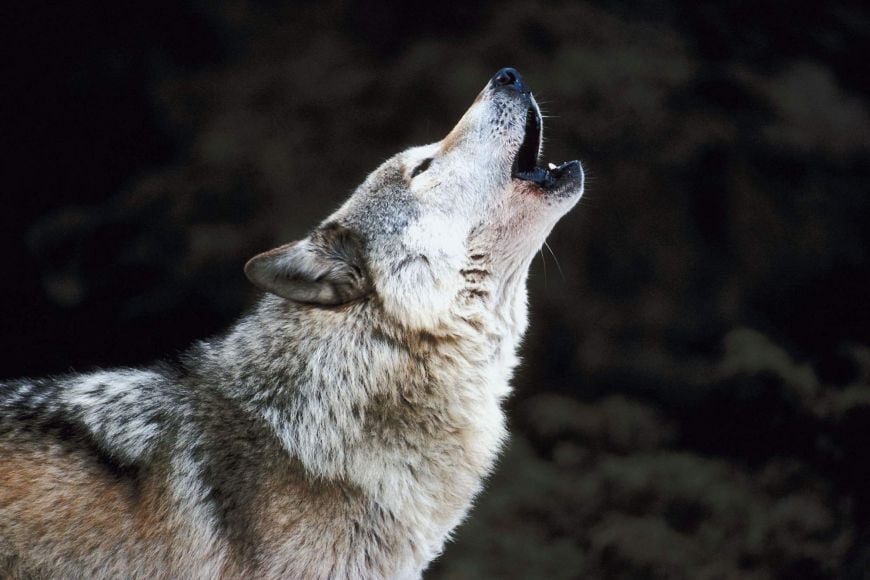Turkey, a country renowned for its rich history, vibrant culture, and stunning landscapes, is also home to an impressive array of wildlife. Among these, the Turkish wolf stands out as the national animal of Turkey. This magnificent creature, with its striking appearance and profound symbolism, holds a special place in Turkish culture and mythology. In this article, we will explore the significance of the Turkish wolf, delve into its characteristics, and understand why it was chosen as Turkey's national animal.

The Turkish Wolf
The Turkish wolf, scientifically known as Canis lupus, is a subspecies of the Eurasian wolf. It is primarily found in the forests and mountainous regions of Turkey, where it roams freely and plays a crucial role in the ecosystem. The Turkish wolf is known for its intelligence, social structure, and adaptability, which have enabled it to survive in various habitats across the country.
Physical Characteristics
The Turkish wolf is a large and powerful predator, with adults typically weighing between 35 to 50 kilograms. They have a robust build, long legs, and a bushy tail. Their fur is usually a mix of gray, brown, and white, which provides excellent camouflage in their natural habitat. The eyes of the Turkish wolf are often amber or yellow, giving them a piercing and majestic look.
Social Structure and Behavior
Wolves are highly social animals, and the Turkish wolf is no exception. They live in packs, which are essentially extended family groups consisting of a dominant breeding pair, their offspring, and other related individuals. The pack operates as a cohesive unit, hunting together, raising pups, and defending their territory from intruders. This social structure is key to their survival and success as apex predators.
Cultural Significance of the Turkish Wolf
The Turkish wolf holds a prominent place in Turkish culture and mythology, symbolizing strength, courage, and independence. The choice of the Turkish wolf as the national animal of Turkey is deeply rooted in the country's history and folklore. Its presence in the cultural fabric of Turkey goes beyond mere symbolism; it is a testament to the values and traditions that have shaped the Turkish identity over centuries.
Mythological Roots
In Turkish mythology, the wolf is considered a sacred animal and is often associated with the creation of the Turkish people. One of the most famous legends is that of Asena, a mythical she-wolf who is said to have nurtured and raised the ancestors of the Turkish nation. According to the legend, a young boy who survived a massacre was found and cared for by Asena. As he grew up, he married the she-wolf, and their offspring became the progenitors of the Turkish people. This story underscores the deep connection between the Turkish wolf and the nation's identity.
The legend of Asena is not just a simple tale; it is deeply embedded in the collective consciousness of the Turkish people. It symbolizes rebirth and resilience.
After a near extinction event, the boy’s survival and his subsequent union with the she-wolf mark the beginning of a new lineage, a new hope. This myth reflects the idea that the Turkish people, much like the wolf, are survivors who can rise from the ashes of adversity.
In addition to Asena, other mythological tales feature wolves as guides and protectors. In some stories, wolves lead lost travelers to safety, symbolizing guidance and protection. The wolf’s keen senses and survival instincts are revered and seen as qualities to emulate.
Symbol of Strength and Independence
The Turkish wolf is a symbol of strength, resilience, and independence, qualities that are highly valued in Turkish culture. Throughout history, the wolf has been depicted in various forms of art, literature, and emblems, often representing the spirit of the Turkish people. The image of the wolf can be found on ancient artifacts, traditional textiles, and modern-day symbols, reinforcing its status as a national icon.
Historical Depictions
Historically, the wolf has appeared in numerous forms of art and decoration. In ancient times, the wolf was a common motif on artifacts such as pottery, weapons, and jewelry. These items often depicted wolves in hunting scenes or as protective spirits, highlighting their importance in daily life and spiritual practices.
During the Ottoman Empire, the wolf continued to be a powerful symbol. Ottoman miniatures and manuscripts sometimes featured wolves, representing power and loyalty. The wolf’s image was also used in military insignia, emphasizing bravery and strength.
Modern Symbols
In contemporary Turkey, the wolf remains a potent symbol. It is often used in nationalistic contexts, representing the unity and strength of the Turkish people. The Grey Wolves (Bozkurtlar), a nationalist organization, take their name from this revered animal, symbolizing their ideals of strength, courage, and Turkish identity.
Wolves also appear in modern Turkish literature and cinema, where they often symbolize freedom and wild beauty. These representations continue to inspire and remind people of their cultural heritage.
Art and Literature
In Turkish literature, the wolf is often portrayed as a noble and intelligent creature. Poets and writers have used the wolf as a metaphor for freedom and untamed nature. For instance, the famous Turkish poet Nazım Hikmet has referenced wolves in his works to evoke themes of wilderness and independence.
Turkish folklore is rich with tales of wolves that embody wisdom and bravery.
These stories are passed down through generations, keeping the cultural significance of the wolf alive. In many of these tales, the wolf serves as a guide or protector, leading heroes through difficult journeys and helping them achieve their goals.
Textile and Craft
Traditional Turkish textiles often feature the wolf in their designs. Kilims (woven rugs) and other fabrics may include wolf motifs, symbolizing protection and strength for the household. These designs are not merely decorative; they carry deep cultural meanings and are a testament to the enduring legacy of the wolf in Turkish art and craft.
The Role of the Turkish Wolf in Turkey's Ecosystem
The Turkish wolf plays a vital role in maintaining the balance of Turkey's ecosystems. As apex predators, wolves help regulate the populations of herbivores such as deer and wild boar, preventing overgrazing and promoting the health of forests and grasslands. This, in turn, supports a diverse range of plant and animal species, contributing to the overall biodiversity of the region.

Conservation Efforts
Despite their importance, wolves in Turkey face several threats, including habitat loss, human-wildlife conflict, and illegal hunting. Conservation efforts are underway to protect the Turkish wolf and ensure its survival for future generations. Organizations and government agencies are working to establish protected areas, promote coexistence between humans and wolves, and raise awareness about the ecological significance of these majestic animals.
What is the National Animal of Turkey?
When asked, "What is the national animal of Turkey?" the answer is unequivocally the Turkish wolf. This choice reflects the country's appreciation for the wolf's role in its natural and cultural heritage. By recognizing the wolf as the national animal, Turkey highlights the importance of preserving its wildlife and maintaining the ecological balance within its borders.
Turkish Symbols and Their Meanings
In addition to the Turkish wolf, Turkey is known for a variety of national symbols that represent the country's identity and heritage. These symbols, ranging from architectural landmarks to natural wonders, each hold unique meanings and significance.
The Tulip
The tulip is a symbol of beauty and perfection in Turkish culture. It has been cultivated in Turkey for centuries and played a significant role in the Ottoman Empire. The tulip is often depicted in Turkish art and design, symbolizing grace and elegance.
The Crescent and Star
The crescent and star are iconic symbols of Turkey, prominently featured on the national flag. The crescent moon represents progress, while the star signifies the bright future of the nation. Together, they embody the ideals of unity and hope.
The Turkish Delight
Known locally as "lokum," Turkish delight is a traditional sweet that has become a symbol of Turkish hospitality and culture. Its varied flavors and textures reflect the diversity and richness of Turkish culinary traditions.
Wolves in Turkey: Beyond the National Animal
Wolves in Turkey are not only significant as the national animal but also play a crucial role in the country's folklore and natural environment. Their presence is a reminder of the wild and untamed beauty of Turkey's landscapes.
Living alongside wolves requires a delicate balance between conservation and human interests. Efforts to promote coexistence include educational programs, compensation schemes for livestock losses, and the creation of wildlife corridors to facilitate safe movement for wolves and other wildlife.
Wolves also contribute to Turkey's ecotourism industry. Wildlife enthusiasts and nature lovers visit Turkey to experience its diverse fauna, including the chance to spot the elusive Turkish wolf in its natural habitat. Ecotourism initiatives help raise awareness about the importance of conservation and provide economic benefits to local communities.
The Turkish wolf, as the national animal of Turkey, embodies the spirit and resilience of the Turkish people. Its significance goes beyond its role in the ecosystem, symbolizing strength, independence, and a deep connection to the nation's cultural heritage. By preserving and protecting the Turkish wolf, Turkey honors its past and looks forward to a future where humans and wildlife can coexist harmoniously.
The national animal of Turkey is not just a symbol; it is a testament to the country's commitment to its natural and cultural legacy.
Through understanding and appreciation, the Turkish wolf continues to inspire and represent the enduring spirit of Turkey.
We are always ready to answer all your questions, please reach out via Whatsapp +90 (532) 158 42 44
If you want to emigrate or buy an apartment in Turkey or own a property in turkey and enjoy life by the sea, message our specialists who will find the best options for your budget.
Also, subscribe to our YouTube channel and Instagram page to receive information from the professionals!
An additional channel to connect with us: Telegram
